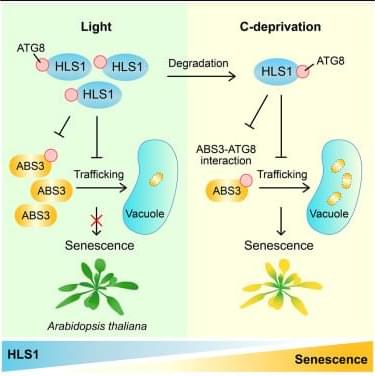Companies claim that Tyrannosaurus rex leather could soon be entering the luxury fashion market, but dinosaur researchers say you can’t make genuine T. rex skin.


Looks awesome.
A physicist claims that gravity is not a force holding life together, but that it is actually a clue that we live in a simulation.
Substack | https://domsniezka.substack.com/Twitter | https://twitter.com/domsniezkaWebsite | http://domsniezka.com/*****Michael Levin is a Scientist at Tufts…






Lei et al. show that HLS1 negatively regulates plant senescence and the ABS3-mediated senescence pathway by interacting with ATG8 and attenuating the ABS3-ATG8 interaction and the ability of ABS3 to promote senescence. Their study provides insights into the functional link between HLS1, ABS3, and ATG8 in plant senescence regulation.